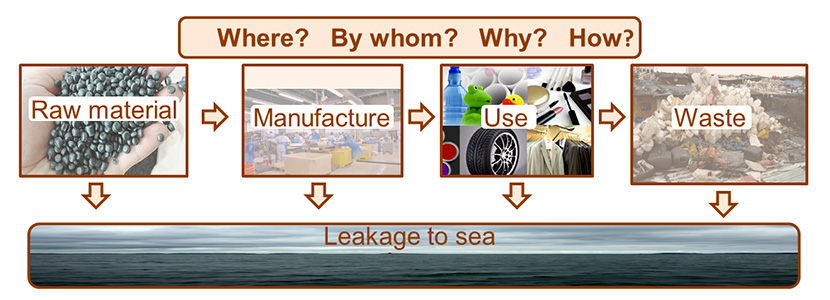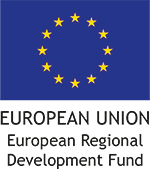Where? By whom? Why? How?
It is recognized that the most of marine litter origins from land and the main bulk of it consists of plastics. Rivers act as major transport pathways for all sizes of plastic litter.
Marine littering is a consequence of how societies and individuals produce and deal with waste. In order to effectively combat the issue, it is important to ask: where, by whom and why litter is released, and how it enters the marine environment? If these questions can be answered, it would ease to define appropriate measures to reduce marine littering. However, many litter items can originate from a number of sources, both land-based and sea-based, and transported over long distances before ending up to the sea. Especially when identifying marine plastics, their geographic (distance), sectorial and temporal origin can be difficult to assess.
 Simplified representation of potential leakage stages to the sea; leakage of plastics can occur at all stages of the production-use-disposal cycle. (Figure is modified from UNEP 2016; original by P.J. Kershaw).
Simplified representation of potential leakage stages to the sea; leakage of plastics can occur at all stages of the production-use-disposal cycle. (Figure is modified from UNEP 2016; original by P.J. Kershaw).
The size of marine plastics litter is variable: small pellets can be deliberately manufactured (primary microplastics; < 5 mm) or they are formed when products (macroplastics; > 5mm) gradually transform into smaller fragments (secondary microplastics; < 5 mm). Secondary microplastics are also released in processes, such as laundry (textile fibres) and road traffic (dust from tyres and road markings). Sources of microplastics can be extremely difficult to allocate.
At present there is a significant knowledge gap for quantitative information of plastics input loads, sources, originating sectors and users. The beach litter studies – based mostly on voluntary work – provide valuable information of the potential sources of marine litter and help to develop appropriate measures to combat the issue.

